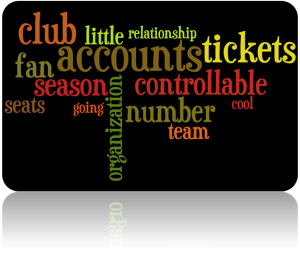 The healthcare industry is seemingly struggling to come up with a common and manageable definition for the “Patient Experience.” Maybe it’s because “experience” is such a broad term just like terms such as “feeling, perception, opinion” – which are often the words used to evaluate the Patient Experience. As an example, when the article Hospitals Focus On Patient Experience Through Design addresses Patient Experience, virtually the sole focus of the experience is the facility – the layout, the furnishings, the look/feel of the physical surroundings.
The healthcare industry is seemingly struggling to come up with a common and manageable definition for the “Patient Experience.” Maybe it’s because “experience” is such a broad term just like terms such as “feeling, perception, opinion” – which are often the words used to evaluate the Patient Experience. As an example, when the article Hospitals Focus On Patient Experience Through Design addresses Patient Experience, virtually the sole focus of the experience is the facility – the layout, the furnishings, the look/feel of the physical surroundings.
Therefore, Patient Experience could reference a facility, an employee, a phone call, or a website. It could reference a process, a wait time, other patients, communications, quality of care, cleanliness, food quality, or noise. It’s just too much to consider in terms of the multitude of definitions and aspects of an encounter or relationship that the patient has with the provider.
Patient Experience professionals don’t have unlimited time or resources. They can’t redesign a facility, turn all employees into Disney cast members, and get processes working like a Toyota assembly line to create the optimal Patient Experience. Instead, to make Patient Experience management…well…manageable, ask yourself this one question:
How do we focus “Patient Experience” efforts on that which has maximum impact on the patient’s feelings, perceptions, and opinions?
I’m going back to those 3 words – feelings/perceptions/opinions – because patients make the decision about whether to return if needed or seek care elsewhere based on feelings/perceptions/opinions. The answer to that question helps you to determine what impacts the patient’s willingness to recommend your organization to others. The answer to that question results in your understanding what can make a patient decide to give you the positive or negative rating. And the answer to that question helps you to better understand how they decide to be compliant with their self-care or post-discharge instructions. They decide all of these points based on their feelings/perceptions/opinions.
Through research, you can determine – statistically – what aspects of the experience have the greatest bearing on willingness to return, willingness to recommend, ratings, and compliance. By asking patients what impacts their feelings/perceptions/opinions, you allow them to guide you toward what would move their experience from good to GREAT! Don’t view your role as a Patient Experience professional as one that requires you to fix all the people, process, and facility ills in the healthcare world.
Let the Voice of the Patient guide your plans and priorities.
Did you like this post? Here are other Healthcare-related posts:
 Usually I can share an insightful “lesson learned” from customer service stories on the web, but this one is too little weird to evaluate; yet, it’s interesting enough to share.
Usually I can share an insightful “lesson learned” from customer service stories on the web, but this one is too little weird to evaluate; yet, it’s interesting enough to share.






















